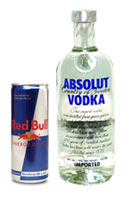How much of consumer spending is driven by our identity and the need to signal it to others? And where exactly does our identity come from?
The more I think about it, the more I feel that identity – the projection of the person we desire to be – is a primary driver behind all consumption decision. Economists explain spending behaviour with utility theory, but rarely consider what exactly utility is, where it comes from, or how we know in advance our utility from new products.
Economists are slowly embracing signalling as an explanation for behaviour that is more descriptive than basic utility theory. George Ackerlof is leading the charge. He:
provides a framework for incorporating social identities into standard economics models, expanding the standard utility function to include both pecuniary payoffs and identity utility.
This comprehensive website based on Ackerlof’s book provides plenty of background reading.
Mainstream economics began to grasp signalling when analysing job-seekers pursuit of qualifications, and employer considerations. Typically qualifications are not desired for the benefit of learning a skill, but to signal a level of competence to a potential employer in a competitive job market.
So why would people not signal their competence, ambition, compassion, adventurous spirit, environmental awareness or other personality trait through consumption behaviour? Marketers know, for example, that most people who buy premium brands of outdoor equipment rarely use them in the extreme environments for which they are designed. Paying the price premium for the ‘quality brand’ projects a signal about your character – that you have a passion for the outdoors, so much so, that when it comes to your equipment you won’t compromise.
At a more primal level, and the one to which marketers most commonly appeal, signalling involves appealing to the opposite sex. Products are intentionally associated with desirable character traits, and each purchaser is subconsciously buying a signal of this trait for others to observe.
I suggest that this type of consumer behaviour is best explained by referring to Maslow’s hierarchy of needs. For example, our need for belonging and esteem can be satisfied by purchasing products that are associated with particular social groups, regardless of their cost effectiveness for their intended practical function. Once our basic needs are met, what other purpose does consumption serve but to fulfil these higher level desires?
Broadening our understanding of utility help to explain the somewhat irrational outcomes we observe in reality, but not in economic theory. When someone pays $30,000 more for a European version of an almost identical car, while there may be some improvement in quality, for the objective driver the value of this quality gain is not nearly $20,000.
But, it makes sense when you think about signalling. The signal that the European car sends about you cannot be bought elsewhere for anything near the $20,000 premium you paid. You would have to deck out the house and family in the most designer furniture and clothes to send a signal that you are the type of person who goes for quality or nothing, no matter what the cost.
And that’s how I see more and more consumer behaviour as we become wealthier. If utility theory worked, marketing departments would not exist. Nor would the upward sloping demand curves observed with Veblen goods.
Yes, Thorstein Veblen explained economic behaviour in terms of signalling status (conspicuous consumption) during the boom times of the 1890s. Many great inventions were first hitting the marketplace including bicycles and petrol-powered cars, and the nouveau riche class was emerging with a way of spend money that needed explanation.
I would argue that during all periods of rapid economic progress this type of consumption behaviour begins to dominate over classically rational utility.
A recent example close to home demonstrates this point. My uncle runs a business selling his wares at a market. After reading some business improvement books he put his prices up. An economist might offer this advice is they believed the demand was relatively inelastic. But in a market with competition on all sides, it seemed unlikely. The result was, rather than reducing sales, the higher price increased sales. The new higher price sent the signal of quality the buyers were looking for.
The pattern is clear to see almost everywhere. You might not believe it, but I’m the type of strange person who likes to buy no brand equivalent products and conduct blind taste tests. At one party I did Red Bull and the ALDI generic version. The vast majority preferred the ALDI brand (about 80%), yet it was only a quarter of the price. But who would want to be seen drinking a ‘Vodka ALDI’? People drink a ‘Vodka Red Bull’ because it signals their ‘extremeness’ – as Red Bull’s marketing department is only too eager to point out.
It seems clear that if economics is going to be a more useful took for analysing consumer behaviour and business responses, it needs to follow Ackerlof’s lead and look to where utility actually comes from, and whether indeed utility theory is even necessary to explain consumer behaviour.
Tips, suggestions, comments and requests to [email protected] + follow me on Twitter @rumplestatskin
